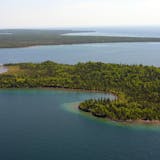State regulators decided Thursday to take a deeper look at the environmental effects of crude oil pipelines planned across northern Minnesota.
In procedural decisions on a pair of pipelines — one to deliver North Dakota crude oil, another to import Canadian crude — the Minnesota Public Utilities Commission set the stage for an expansive environmental analysis that supporters fear will delay the projects.
"We already know it is going to be gigantic," commission Chairwoman Beverly Jones Heydinger said of the planned environmental study.
The effort was compared to PolyMet Mining Corp.'s proposed northern Minnesota copper mine. A 3,500-page environmental report on that project was released in November — after 10 years of work.
Calgary-based Enbridge Energy, which proposes the two pipelines, wants the reviews done in time to begin construction in 2017. Company officials are concerned that delays in the studies could wreck that schedule.
"We intend to do extensive modeling of spill deposition and what happens at key, representative points — what would happen with a small- or medium-sized leak or a large leak," said Bill Grant, deputy commission for energy in the state Commerce Department, which will oversee the environmental studies.
Grant told regulators that the department will seek expert help from state environmental agencies and outside consultants. He defended the department's earlier environmental studies after pipeline opponents raised doubts about its expertise. "You are talking about people who have decades of experience in environmental review matters," he said.
For the North Dakota pipeline, known as Sandpiper, as well as the replacement of a line from Canada, called Line 3, the commission authorized full Environmental Impact Statements (EIS). The process requires draft and final versions of the study — steps that will be layered on top of the usual regulatory review for energy projects.



